My Journey to Lalish Temple: The Sacred Site of the Yazidis
Deep in the heart of Iraqi Kurdistan lies Lalish Temple, a mysterious complex in the mountains and the holiest site for the Yazidi people – a religious minority group whose beliefs and traditions have been shrouded in mystery and misunderstood by outsiders for centuries.
I found out about this place when I arrived in Iraqi Kurdistan. I made it a mission to visit and despite its remote location, I got there.
The temple complex consists of several shrines, courtyards, and tombs that date back hundreds of years. For the Yazidis, Lalish is more than just a place of worship – it’s a symbol of their identity and survival against all odds.
Who Are the Yazidi People?
The Yazidis are an ethnoreligious group that live primarily in Iraq but also have communities scattered throughout Turkey, Syria, Armenia, Georgia, and Russia. Their religion dates back over 4,000 years and is believed to be one of the oldest monotheistic religions in the world.
Yazidis believe in one God who created seven angels to govern different aspects of creation. They also have a deep reverence for nature and believe that all living things are connected.
Tawuse Melek – the Peacock Angel
One unique aspect of their religion is their belief in Tawuse Melek who Yazidis consider to be good and benevolent.
Tawuse Melek is the leader of the Seven Divine beings created by God to govern the world. He is responsible for all that happens in the world and is the source of all light on Earth.
Tawuse Melek is portrayed as a peacock. The name literally means Peacock Angel.
Outsiders have misinterpreted Tawuse for centuries. Other religions would claim that he’s a fallen angel similar to Satan in Abrahamic religions. Yazidis believe he is an emanation of God himself and purely good.
This misunderstanding is why the Yazidis have been persecuted and their faith branded as Devil Worship.
Why Lalish Temple is so important
Lalish Temple is the most sacred site for Yazidis around the world. It’s where they come to pray, make offerings, and connect with their God.
According to Yazidi beliefs, Lalish is where the seven angels descended to earth and where Adam and Eve were reunited after being separated in the Garden of Eden. For Yazidis, a visit to Lalish is an essential part of their spiritual journey.
For them, Lalish Temple is not just a religious site; it is the very heart of their belief system. It represents their connection to their ancestors, their gods, and each other as a community.
Lalish to Yazidis is what Mecca is to Muslims and what the Holy Sepulcher in Jerusalem is to Christians.
Yazidi Religious Practices and Traditions
Lalish Temple plays a central role in Yazidi’s religious practices. It is here that Yazidis come to pray, meditate, and perform rituals.
The Gate of the Master
At the entrance to the temple complex, visitors must pass through a gate called “Bab al-Shaykh,” which means “the Gate of the Master.”
This gate symbolizes entering into a sacred space and preparing oneself for spiritual transformation.
IMPORTANT: You must be dressed modestly to enter Lalish. For men, this means long pants, whereas for women it means covered legs, shoulders, and a head covering is recommended.
At the entrance, you will be asked to remove your shoes. Nobody in Lalish wears any shoes. While it’s recommended that you’re barefoot, many visitors wear socks.
The stones can be scorching in the summer and freezing in the winter. Take some socks with you and decide on-site.
tum – Jundi Serdah – where only high-ranking members of the religious hierarchy may enter.
Baptism
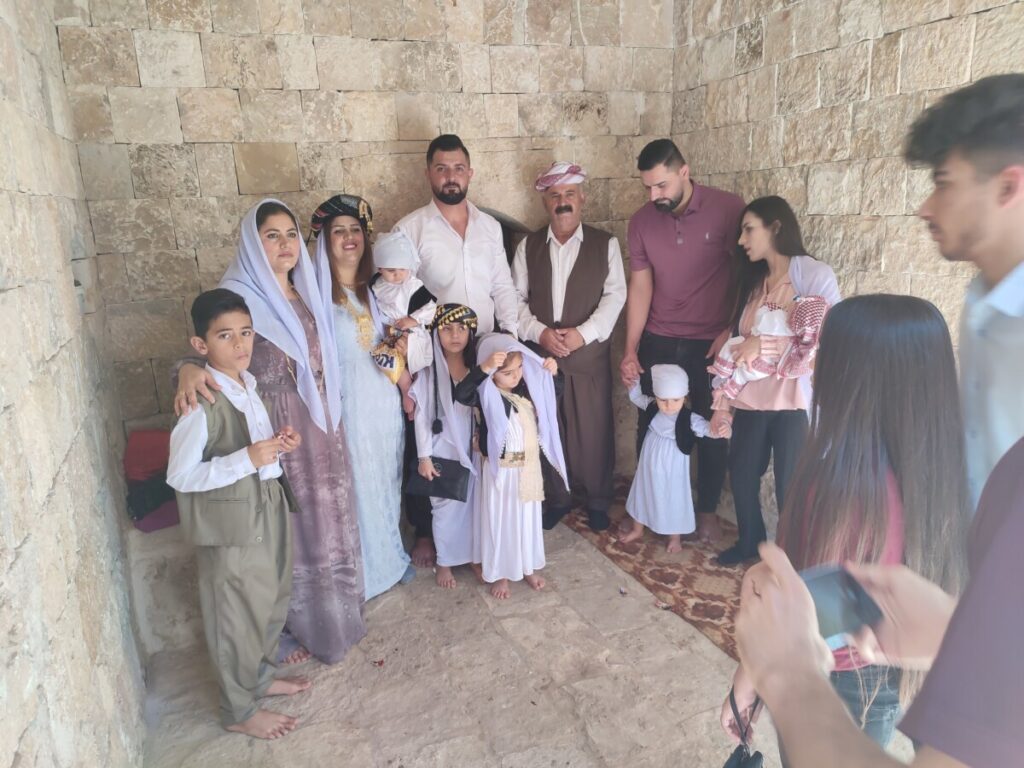
Like in Christianity, Yazidis practice baptism. This takes place in a chamber known as “The White Spring” and is pretty much the same as a Christian baptism.
I was lucky enough to witness one! Outsiders are not allowed inside the chamber, but I could observe from a distance.
The Wish Tree
Tie a piece of cloth on the tree and walk around it wishing (asking God) it comes true. Which tree? You’ll know – it’s the biggest tree and it’s right in front of the entrance to the tomb.
Entering Sheikh Adi’s Tomb
Sheikh Adi’s Tomb is where Sheikh Adi Ibn Musafir – founder of the Yazidi faith – was buried after his death in 1162. It’s the holiest place in Lalish.
At the entrance of the tomb, you’ll notice a raised sill on the ground. You must step over it, not on it. You’ll notice that all doors in Lalish have the same raised sill. The rule applies to all sills as they are believed to be the resting place of angels.
The Yazidis also worship black snakes, often seen as a symbol of the devil. However, according to Yazidism, Noah used a black snake’s body to plug a hole in the ark, thus saving Noah’s arch.
You can see a black snake depicted at the entrance to Sheikh Adi’s Tomb.
Visitors can enter the temple, but not the tomb itself.
The Knots
When you enter you’ll notice silk cloths tied everywhere. Knots are important for Yazidis. You have to make a wish while tying a knot on one cloth and then untying another knot.
This is symbolic of you “releasing” a wish so that yours can be granted.
The Oil Room
The next chamber has a bunch of oil jars on the side. This room is where the Yazidis store their oil. They use it to light a lamp every day of the year to symbolize the neverending light of the sun.
In the room, Yazidis take a piece of oil-dampened cloth and throw it trying to make it land on the stone slab at the end of the room. They get three attempts and if at least one is successful, they will have good luck.
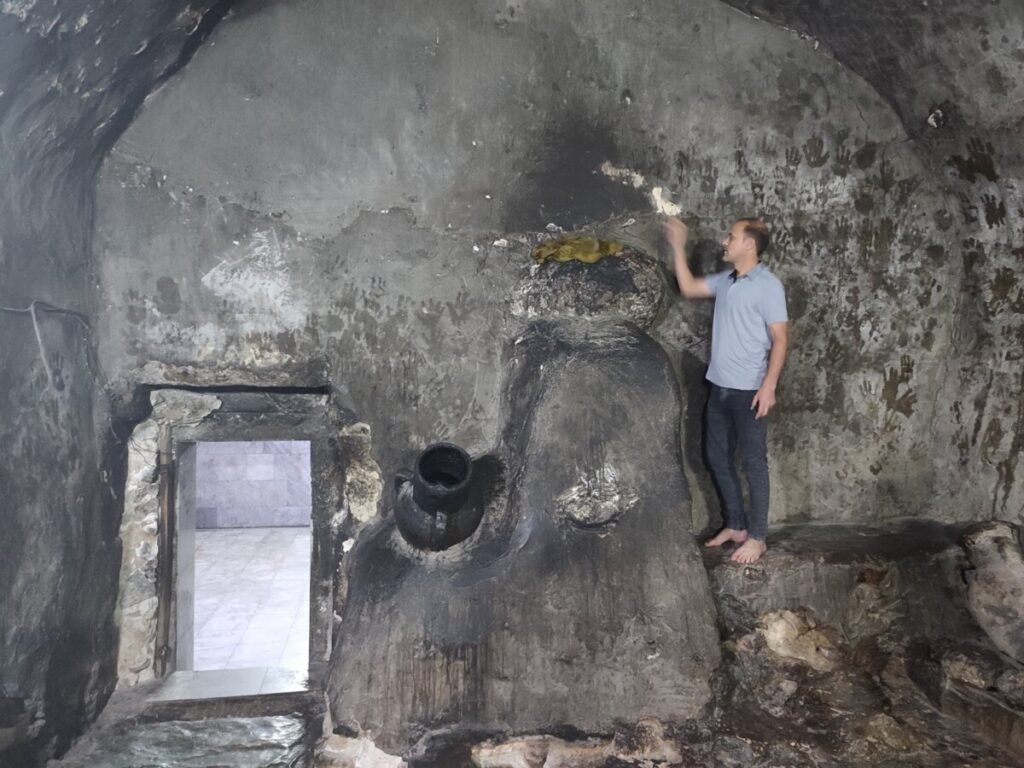
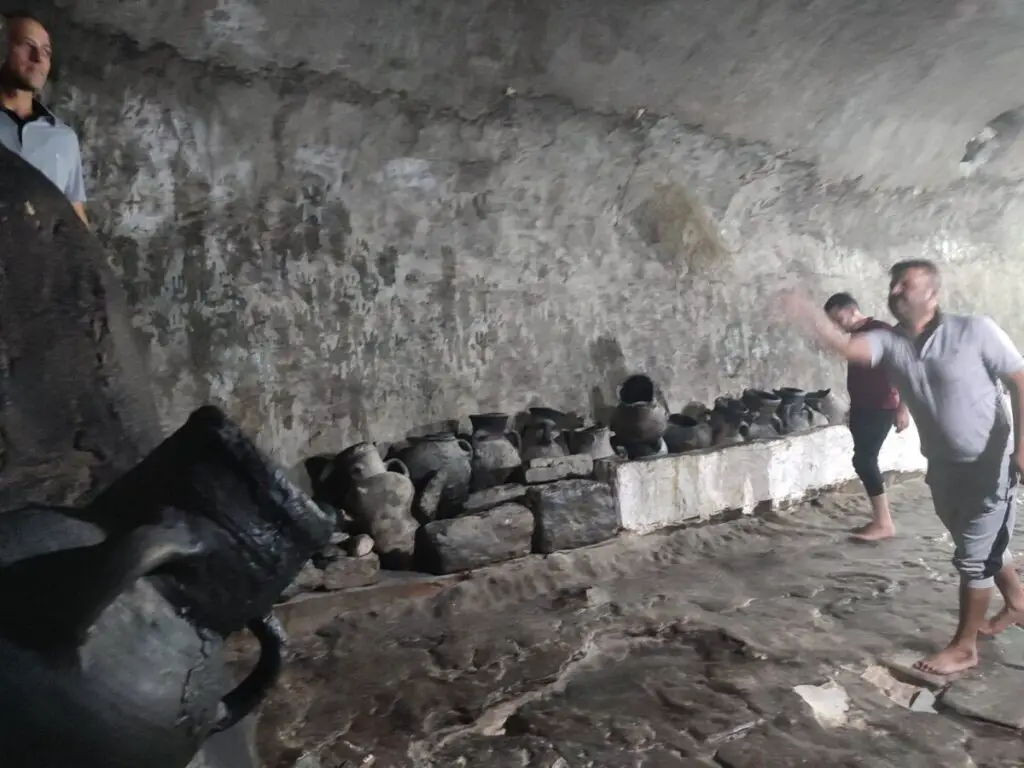
The Bread
At the end of a trip to the temple, Yazidis go to the bread room next to the temple and eat a piece of stale bread.
Yazidi New Year
The Yazidis have their own calendar. For example, 2024 roughly corresponds to the year 6773 for the Yazidis.
The Yazidi New Year is always on the first Wednesday of spring, which in Gregorian Calendar terms is on or after the 1st of April.
If you’re planning a trip to Iraqi Kurdistan in 2024, it might be wise to save the date 3rd of April.
The Yazidis have many traditions and rituals that take place during their New Year Celebrations.
Endogamy
The Yazidis are endogamous, that is they only marry within their social circle. If anyone marries an outsider, they immediately lose their religious status as a Yazidi.
That’s one of the reasons why the Yazidi are so secretive and mysterious, but also a reason why their population is slowly dwindling.
Historical Events that Have Affected Lalish Temple
Over time, Lalish Temple has faced numerous historical events threatening its existence and significance to the Yazidi people. In 1414 A.D., Timur (Tamerlane) invaded Iraq and destroyed many religious sites, including the Lalish Temple.
Lalish was later rebuilt by Pir Shamsaddin after his pilgrimage to Mecca.
Another significant event occurred during Saddam Hussein’s regime when he banned all Yazidi religious practices in an attempt to eradicate the culture of various peoples in Iraqi Kurdistan.
This led to severe persecution of Yazidis who were forced into hiding or faced death if caught practicing their faith openly.
Most recently, ISIS targeted Yazidis for extermination due to their beliefs which they considered heretical.
During their occupation of northern Iraq between 2014-2017 they killed thousands of men indiscriminately while enslaving women and children as sex slaves or forcibly converting them to Islam.
Despite these existence-threatening challenges, Lalish Temple remains a powerful symbol of hope and resilience for the Yazidi people and their beliefs.
How to get to Lalish Temple
This is the precise location of Lalish on Google Maps.
From Erbil
The distance from Erbil to Lalish is around 120 km. Since there’s no permanent population in Lalish, there is no need for public transport. And there isn’t any.
The only way to reach Lalish is to take a private taxi, which costs around 40000 IQD / 31 USD one way. Hitchhiking is an option.
From Duhok
When I went to Lalish, I did so from Duhok. It was a very confusing experience. I was told public minibuses go to Ba’adra, which is the closest you can get to Lalish with public transport.
Unfortunately, it turned out that these minibuses either don’t go at all, or go at random, infrequent schedules. Enquire at the bus station in the center of Duhok, but don’t count on that option.
When I got to the bus station in Duhok, I was told there was no minibus to Ba’adra and rushed onto a city minibus towards the outskirts of the city. The minibus stopped literally in the middle of the road where around 10 men quickly began bombarding me with offers to take me wherever I wanted.
I negotiated with one of them to take me to Lalish for 15000 IQD / 12$. In retrospect, I think I could’ve gone for 10000 IQD, maybe even lower, but whatever.
To return to Duhok, I hitchhiked. I had to take 1 car to the intersection for Ba’adra, one more to the checkpoint just after Ba’adra towards Duhok, and a third that took me to the city. Hitchhiking is easy in Iraqi Kurdistan.
If you wanna know more about the logistics of backpacking in Kurdistan, check out my comprehensive Iraqi Kurdistan travel guide.
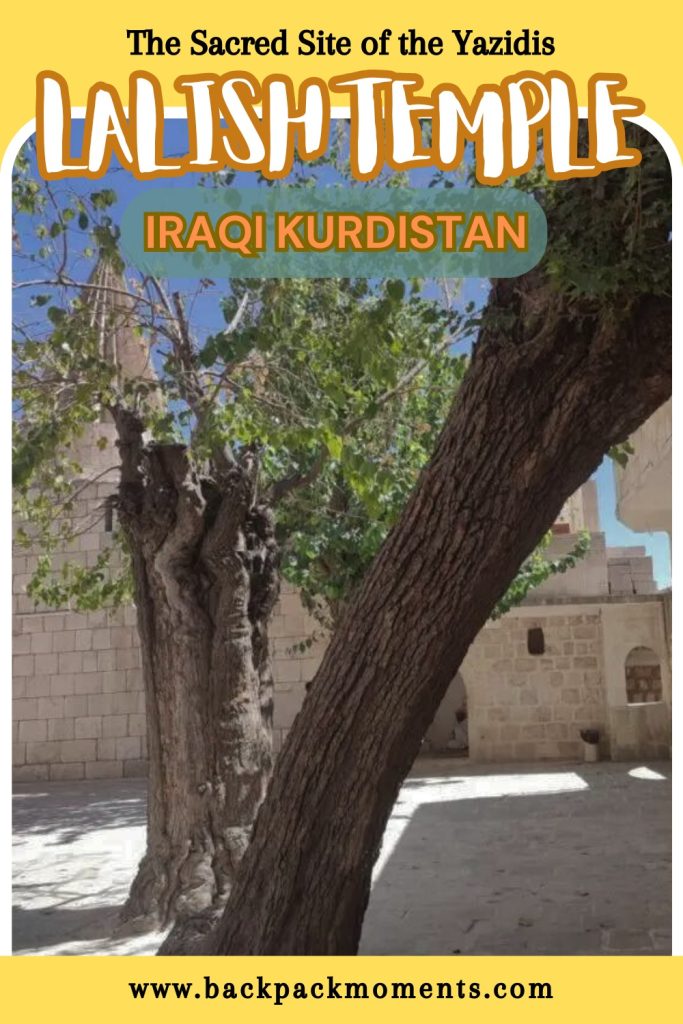

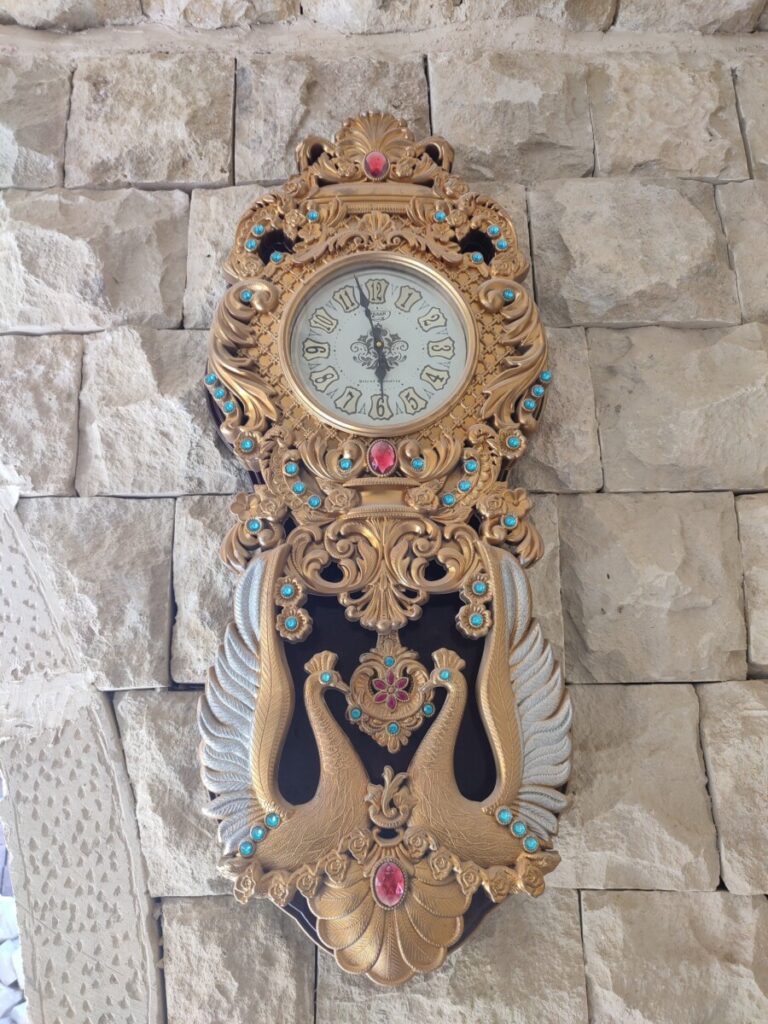
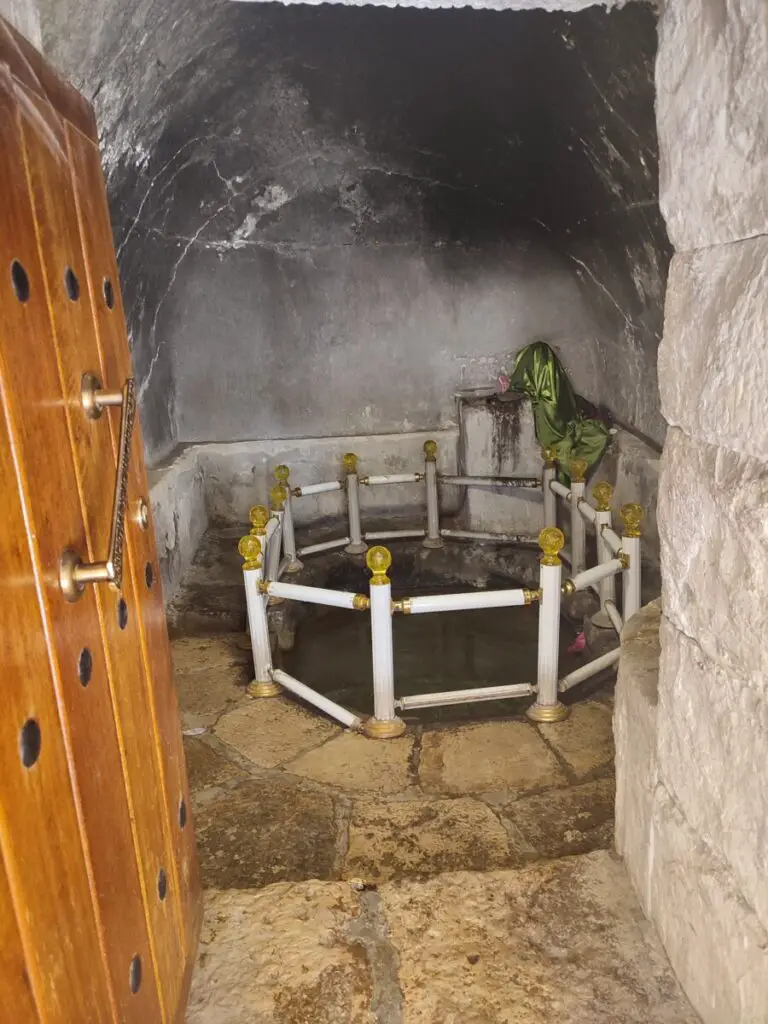
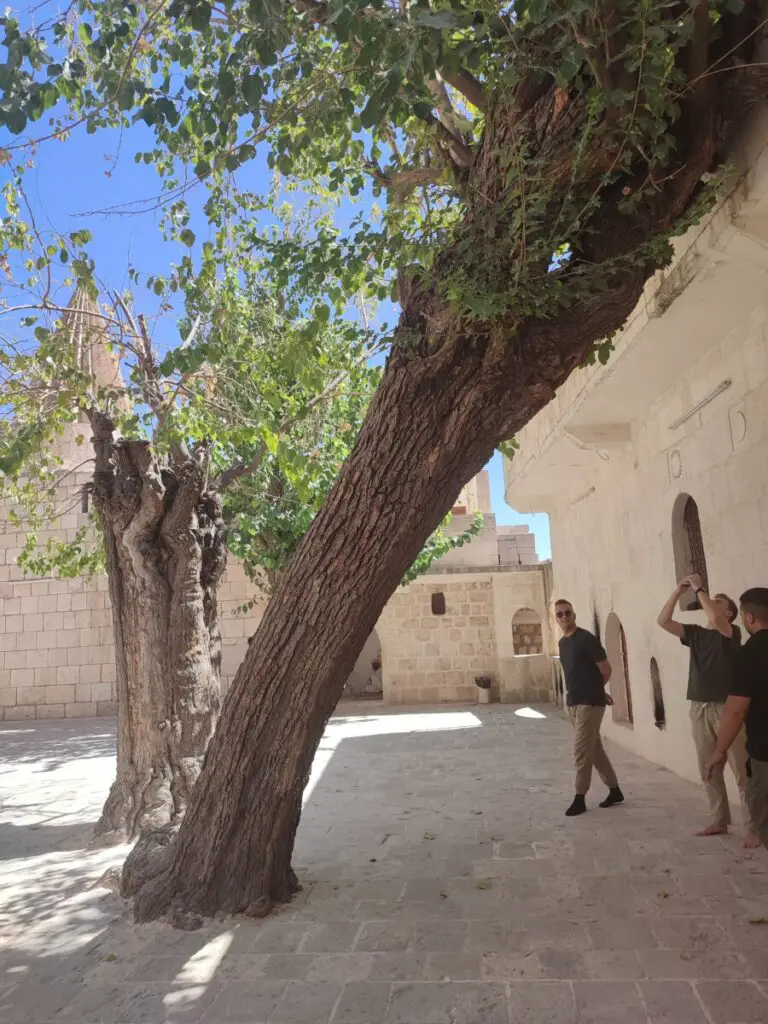


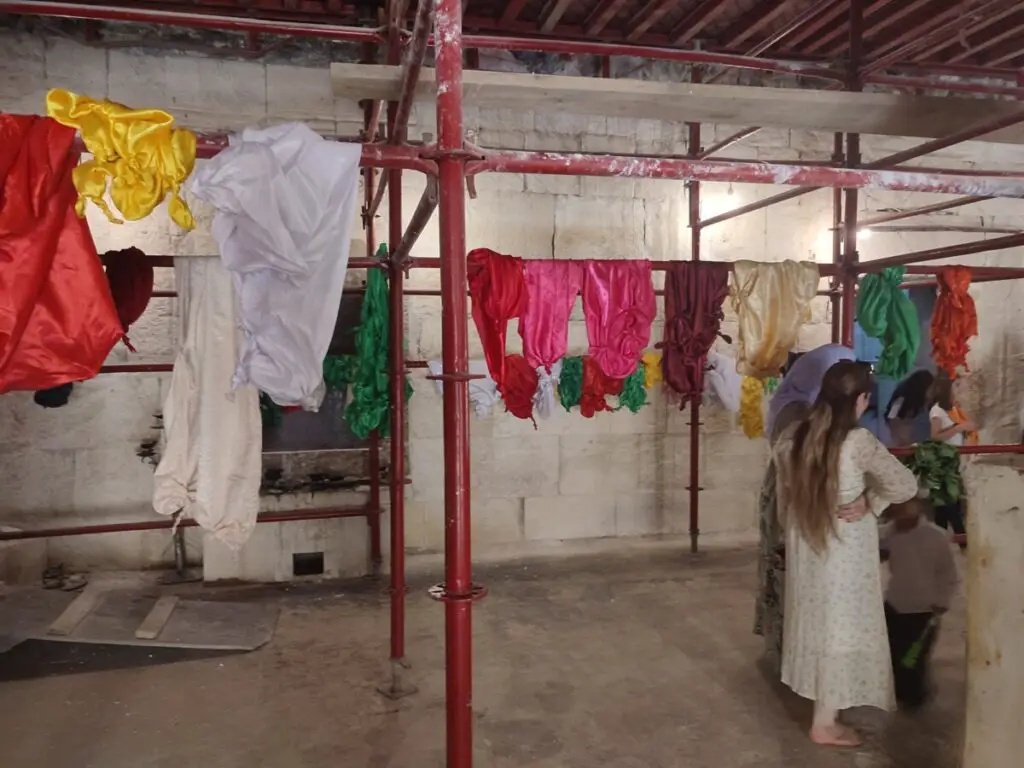
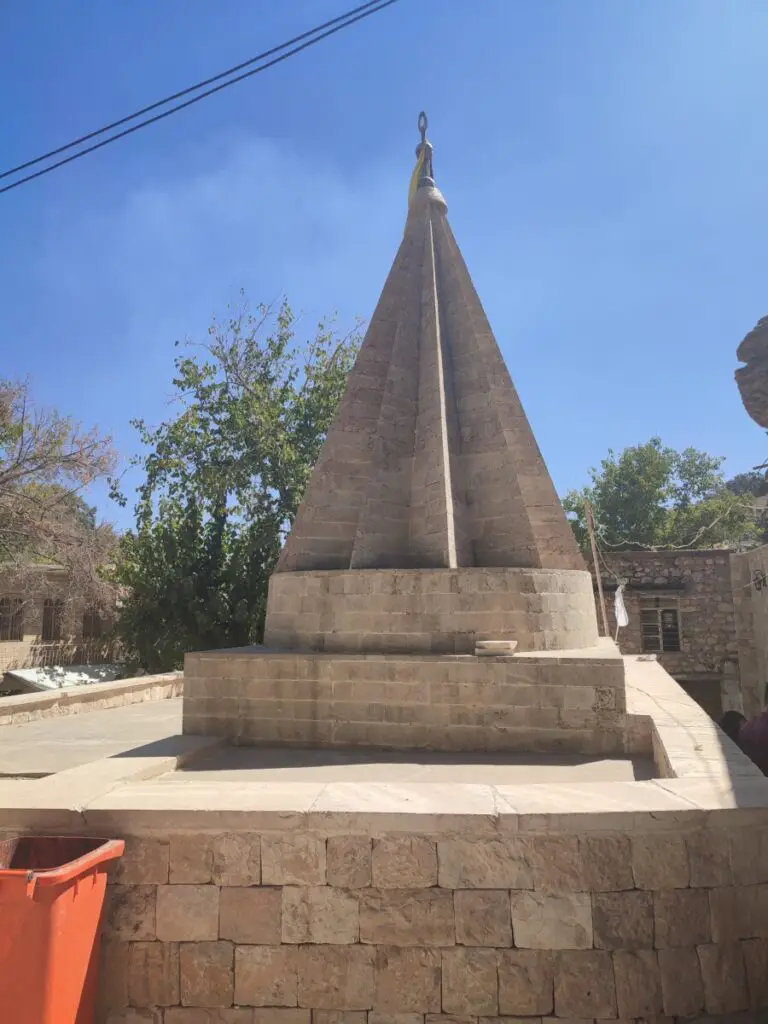
Your stories have been incredibly captivating, and I wanted to express my sincere gratitude for sharing them. The experiences you’ve had are truly remarkable and have provided me with invaluable insights. I’ve learned so much from your adventures. Please continue to enchant us with your exceptional travel blog!